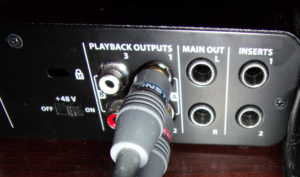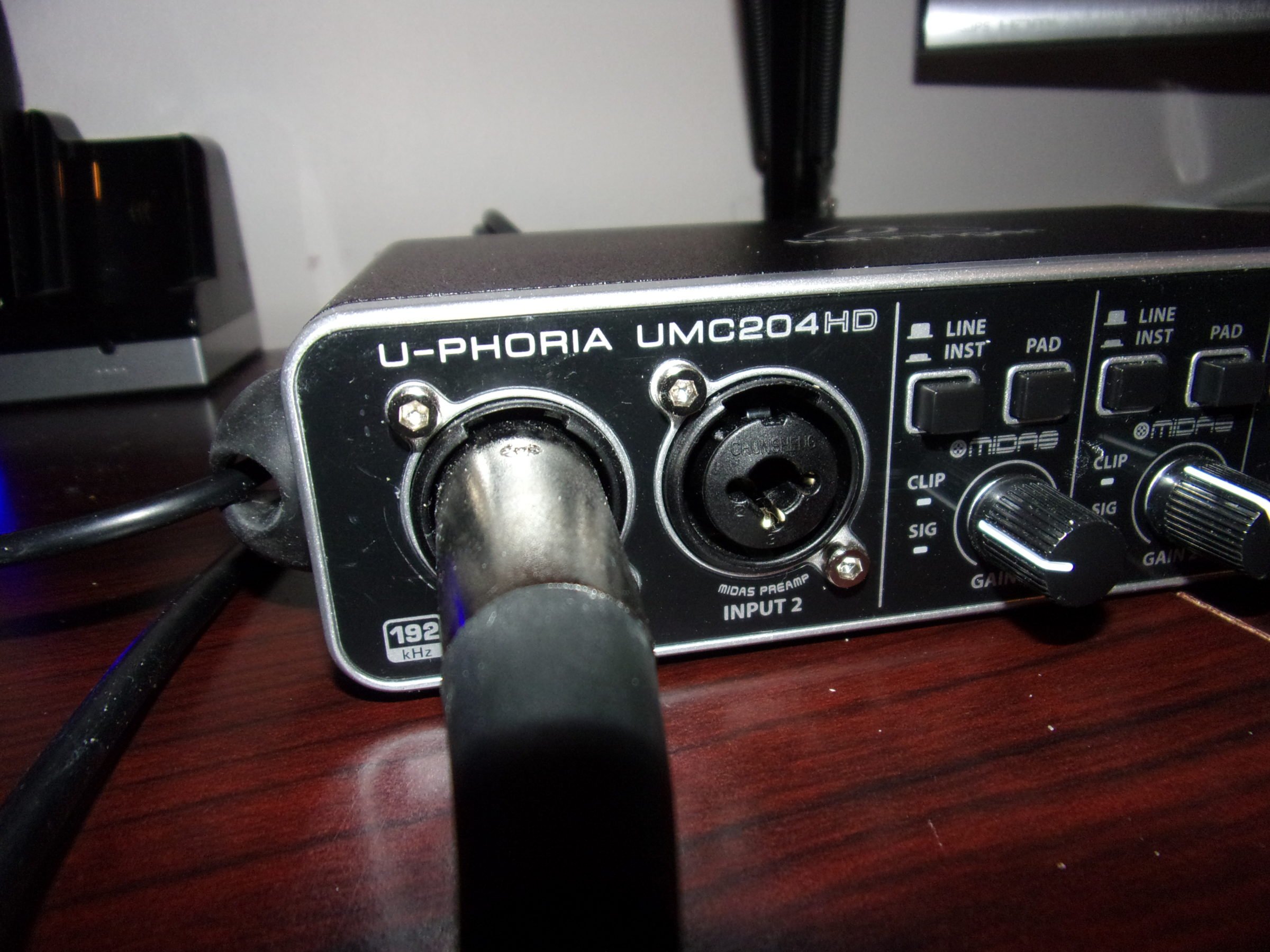Behringer U-Phoria UMC204HD Overview
Summary
The Behringer U-Phoria UMC204HD is an excellent entry-level audio interface. With two XLR and stereo jack hybrid inputs powered by genuine Midas preamps, it has enough power to drive the most power-hungry microphones. It also features a mix knob, which allows you to monitor both the microphone in near real-time and your computer audio simultaneously. This is handy for users who utilize noise-canceling headphones.
Hello, and welcome to Streamer’s haven, your hub for information about live streaming and content creation. It has been a little over three years since I purchased the Behringer UMC204HD audio interface, and I wanted to give you guys an in-depth perspective of how it performs three years later.
Now, I can’t give you a first-hand analysis of how it performs on a technical level. I don’t have the tools or know-how to figure that out – I’m not an Audio Engineer. However, I can give you this high-level information about it from research done by a man named Julian Krause. If you are interested in understanding audiophile equipment at a much higher level, I strongly recommend checking out his videos on YouTube.
He hasn’t specifically done a video on the 204HD, but here is one of the 202HD, which is extremely similar.
What I will be providing is my first-hand experience using the device as an audio enthusiast. I’ll also be explaining some caveats that I have regarding it, as there are some things I wish it did a little bit better. For the price that I bought it, though, it has far exceeded my expectations.
Table of Contents
First impressions of the Behringer UMC204HD

At first glance, the Behringer UMC204HD looks fairly complicated, with several dials and buttons scattered on the front plate. However, if you pay close attention, it is actually much simpler than it appears. The IO is separated into four separate sections –
- Two Hybrid XLR jacks on the left that accepts an XLR and 1/4″ jack commonly used by musical instruments
- Controls for input 1
- Controls for input 2
- And the rest of the controls that handle the listening devices.
Once you break it up visually, it is substantially less daunting to work with. The same goes for audio mixers, which tend to have several input channels to contend with.
Pros:
- Superb Build Quality.
- Everything is very solid, and only a well-used knob has a tiny bit of wobble, which is well within acceptable limits.
- Fantastic audio performance.
- Above all, considering it is paired with a low-end Tonor BM-700 XLR condenser microphone.
- Very reasonably priced.
- More than enough inputs and outputs to support a number of configurations
- 2 Microphone inputs allow for true stereo recording if you have two microphones. Great for ASMR Streaming.
- 2 RCA pairs for A/B output channel control.
Cons:
- Must NOT be located under a TV sitting off a desk.
- I experienced a very annoying ticking noise in my headphones, and I could not figure out where it was from for months. Turns out, it was electromagnetic interference created by the down-firing speaker in the tv located just a few inches over the interface.
- TLDR, keep it away from other electronics!
- The Drivers sometimes crash due to changes made in Windows 10 Updates
- A software patch by Behringer seems to have fixed this issue – haven’t had this issue in over a year now since.
My favorite feature on the Behringer UMC204HD – The Mix knob
One particularly useful knob is the one that is labeled “Mix,” which will allow you to monitor both your microphone input into the headphones that are plugged into the phone’s jack on the far right and the pc or device that it is attached to. This knob is one that I use the most – when I’m chatting with friends, I turn it to the middle, allowing me to hear both myself and my friends through discord on the pc.
I turn it all the way to the right… What this does, is allow me to cut down on the background noise a few levels when watching YouTube, listening to music, or whatever really
When I’m not chatting with friends, I turn it all the way to the right, as shown in the picture above. This allows me to cut down on the background noise a few levels when watching YouTube, listening to music, or whatever, really. This becomes especially apparent with headphones that feature great noise cancellation, such as my Beyerdynamic DT770 Pros.
I find the ability to listen to myself more clearly helps my ability to speak clearly. This knob makes it possible to get this benefit without sacrificing the ability to tune it out when you don’t need it.
The Rear of the interface – A Whole bunch of outputs

Taking a look at the back of the interface, you’ll see a bunch of quarter-inch jacks and RCA inputs. If I’m honest, I don’t really use any of them. The monitoring jack handles that with my headphones, but if you like having speakers, this is where you would put them in.
For the most part, the Inserts can be ignored unless you have some sort of effects processor like the DBX 286s.
The only required to use is the USB port. This device utilizes USB 2.0 tech, so it is best to put it in a USB 2.0 port if you have one. At least with my case, I have had experiences where it would lose connectivity with a 3.0 or above input type. Of course, it could be just some faulty ports on my now 7-year-old motherboard, but I’ve no way of really testing that.
The final things of note here are the 48v phantom power toggle switch and the slot for a Kensington Combination Lock If you think you will need one to protect against possible theft.
How good are the “Award-Winning” Midas Pre-amps?
Well, aside from longevity issues, which I’ll explain in a later section, for the time that I have used the Behringer UMC204HD, these things have been excellent. Crystal-clear audio coming from my Cheapo Tonor BM-700 sounds far better than any headset and lav mics that I’ve used in the past. In fact, the audio out of this setup is so good, I haven’t felt the need to really upgrade my microphone at all, which I find to be pretty funny, given that I’m an audio enthusiast.
But don’t just take my word for it – Do your own research from sources like Julian Krause, BoothJunkie, and Podcastage. I always encourage getting multiple perspectives on a product before making any buying decisions.
Durability – How has it held up from 3 years of abuse?
From day one, this interface has dramatically increased my listening experience. Fast forward 3 years into the future, and it is still performing very well. Some things have cropped up here and there; age does a number on electronics, but nothing unbearable or unexpected –
- issues with software and sound driver lockups on the pc from the Windows 10 1903 update
- Had to work around this issue by unplugging the device and plugging it back in, which temporarily fixed it
- Resolved with a patch released by Behringer
- Microphone input capability appears to have degraded over time across both inputs
- I now have to run it about 20% hotter than I did before to maintain an audible volume. This adds more hiss, as the midas preamps are being worked harder. Nothing unbearable, but it’s there.
- Knob wobble
- Over time, the Mix knob has developed a slight wobble. Nothing too serious, just noteworthy. Probably because I use it every day. All other knobs are solid.
All in all – This thing is still very much in great condition. I’m extremely satisfied by the build quality of this “Technically budget class” audio interface.
Odd Quirks – It is susceptible to electro-magnetic interference
I know that these devices are fairly sensitive, but some of these quirks caught me off guard. One such quirk had to do with when I had it placed directly underneath my TV, near its speaker. For about a month, I suffered from a strange and very annoying light “ticking” noise. Like a metronome, tick tick tick tick tick tick… GAAAH!
It turns out that issue was electromagnetic interference caused by the magnetic coil of the TV’s speaker.
Another weird issue was when I placed my phone on top of the interface – I received a text and heard what I thought was morse code coming through my headphones. After further testing, I confirmed that this same repeating pattern would play just before the speaker’s tone went off whenever I received a text message.
Long story short – Keep these devices away from other devices for the best audio quality possible.
Some other reviews on this interface for your reference
I’m including these reviews because they are the ones that ultimately guided me toward making my own purchasing decision. I hope that they are as helpful to you as they were for me in clearing up your understanding of the device.
Hardware Specifications of the Behringer UMC204HD:
You can probably find all this on the manufacturer’s website, but I’ve included this here just for convenience sake. Plus, I added a bit of extra 🙂
- Inputs:
- 2x XLR/1/4th inch with phantom power support
- 1x Midi-In
- 2x Inset connectors for other professional hardware
- 1x USB 2.0 B Type Connector(Recommend attaching choke to the wire.)
- Outputs:
- 1x Mix controlled 0 latency 1/4th inch studio headphone monitoring port
- 2 pairs of RCA L/R signals(With the ability to switch between signals in the above monitoring port)
- 1 pair of 1/4th Studio Monitors(They are speakers with no built-in EQ, very Flat response curve)
- 1x midi Out(in case you want to chain input or use a virtual midi instrument on your pc.)
- Controls:
- XLR/1/4th inch X2
- 1 Pad button(Reduces gain by a set -20dB on demand)
- Inst/Line toggle button(for plugging in instruments or microphones. Slightly different audio produced)
- You generally want to ensure Inst is selected if your intent is to play a musical instrument
- 1 Gain control knob for Midas Pre-amps
- Mix knob
- Controls the mix between Output/input channels on the interface monitoring port.
- 1x Main Volume control knob
- Only works for outputs plugged into the1/4th inch “Main” outputs. RCA is controlled in the PC output device.
- 1x Stereo/Mono toggle switch for Dual microphone/single microphone setup.
- 1x Monitor output switch button
- XLR/1/4th inch X2
- Phantom Power(48v) toggle switch for XLR ports.
- 1x Kensington Security Lock
- Locking key Sold Separately
- Try the Kensington Combination Lock If you think you will need one *Optional
Before you go…
Some useful cables and adapters to go with this interface:
- Cable Creations 1/4th inch to 3.5mm TRS Adapters
- Velleman 2-pack RCA to 1/4th inch 90° adapters
- Rode SC7 3.5mm male to 3.5mm male TRS Cable
- Amazon Basics 6ft XLR Male to Female cable
If you are interested in buying the Behringer UMC204HD, check it out on Amazon!
If you think you’d need more than two XLR inputs, there are also larger models available, like the Behringer UMC404HD. If you only need a single XLR input, then the smaller Behringer UMC22 is the choice I’d recommend. Don’t mistake this with the Behringer UM2. I recommend avoiding that one due to lack of certain features and a different, lower quality pre-amp.


